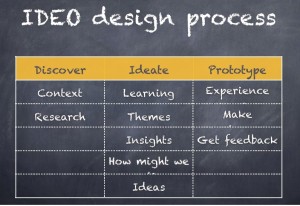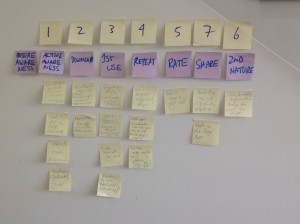We have covered all the villains and their counter actions and all that is left to do, is to work on keeping these villains out of our decision making efforts. To get more anecdotes and tips that will resonate for you pick up the book by Chip and Dan Heath yourself: Decisive: How to Make Better Choices in Life and Work. They also have a great set of tools to support the reading at their website.
I needed one last post to pull all lessons of this great book together. Each piece of advice will improve your decision making, but if you do not include people in what you are doing the tools will only help you with personal decision making. As product managers, it is how we help others that will really make a difference at what we do each day. So please resist the trap of thinking you don’t have time to add these steps into your product management process. Because there never is enough time in the day, a product should have shipped yesterday, the development team is screaming for more stories, and there is always someone calling for decisions to be made faster. Resist the temptation to make a snap decision. Teresa Torres also draws attention to this area from her review of Decisive and argues it is an area product managers need to be mindful of. Taking time to consult with people on the decision(s) to be made creates buy in. Buy in helps with execution and will save you time in the long run.
We often find ourselves having to communicate decisions to those not necessarily involved directly in that moment. Here the procedural justice approach can be really helpful in allowing people to understand the path that got you to that point. They may not like the decision outcome itself, but if they understand what went into it, it will help with acceptance of the decision. One tip that was called out here, was to not only highlight the good sides to the decision but also the downsides or weaknesses. Again, this allows others not directly involved in the decision know what the triggers might be for changing the direction. While we might fear this will lead to sabotage of the effort, it can lead to the opposite and helps with gaining support. Because now, those impacted by the decision can help with preventing the negative outcomes. And sharing the consideration that went into the thought process buy in is more likely. By having everyone on the team keeping an eye out for tripwires, you actually have empowered your entire team/organisation to ensure you keep doing the right things at the right time.
So the last pieces to remember to include people in the process are:
- Bargaining yields buy-in (seems painful to the decision making timing, but helps with implementation/execution)
- Procedural justice is another way to show that thought has been put into a decision (think of a judge system here, when the reasons are clear and considered, both sides of the case feel heard).
- Highlighting some of the downsides of a decision can be another way to get buy-in by calling out areas that might be a trigger or tripwire for reconsidering in the future
“Decisive is a way of behaving. Better to try and fail than to delay and regret.”
In summary of the entire blog series we have covered the 4 villains and how we can counteract them:
- Post 1: Narrow framing is defeated by Widening your options
- Post 2: Confirmation bias can be overcome by Reality testing your assumptions
- Post 3: Short term emotion is diffused by Attaining distance before deciding
- Post 4: Overconfidence is countered by Preparing to be Wrong.
- Post 5: Brings it together and reminds you to involve people in the process (this post).
Thanks for reading and please feel free to add comments on any of these areas below or let us know if there is anything else you would like to see us cover.


